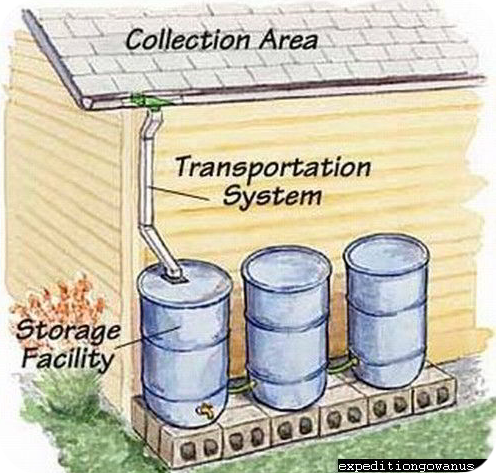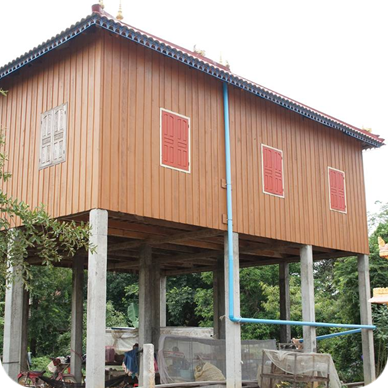Application: Aquifers, bore wells/dug wells, buildings, farms, houses, markets, and reservoirs
Description: Rainwater harvesting from a rooftop is one of the techniques to collect rainwater from surfaces on which rain falls, filtering it and storing it for multiple uses. The harvested water can be used for gardens, livestock, irrigation, domestic use after proper treatment, and indoor heating for houses. It can also be used as drinking water, to recharge groundwater and bore and dug wells and can be stored relatively long-term. The main components of a simple roof water collection system are the roof catchment area, conveyance system or gutter and piping connected to a container (jar, pot or tank).
Contribution to climate resilience: Rainwater harvesting improves water availability for agriculture, livestock, household use (washing, cooking) and personal consumption (with proper treatment). It consequently reduces pressure on other water sources such as groundwater. Construction materials for most rainwater harvesting technologies are locally available, and installation and repair can be undertaken by households, improving their ability to cope with and recover from emergencies.
Supplementary sources of information:
http://www.gdrc.org/uem/water/rainwater/introduction.html
http://www.watercache.com/education/rainwater/
http://www.conserve-energy-future.com/Advantages_Disadvantages_Rainwater_Harvesting.php
http://lms.sjp.ac.lk/fas/wordpress/?p=329
Background image credit: https://www.indiawaterportal.org/topics/rainwater-harvesting
This resilience-building measure is sourced from the Water Resource Adaptation Guide (2019) published by the National Council for Sustainable Development at the Ministry of Environment in Cambodia. The full Guide is available to download at URL https://ncsd.moe.gov.kh/sites/default/files/2019-10/Water%20Resources%20Adaptation%20Guide_March%202019_En.pdf


